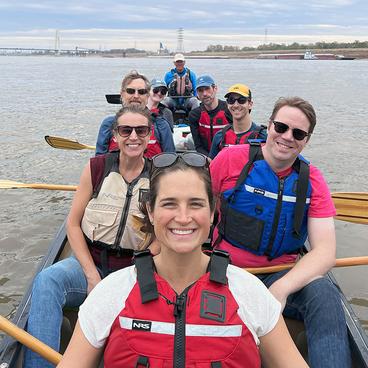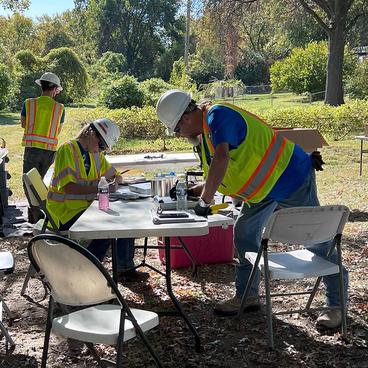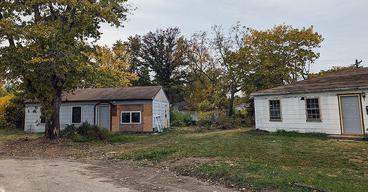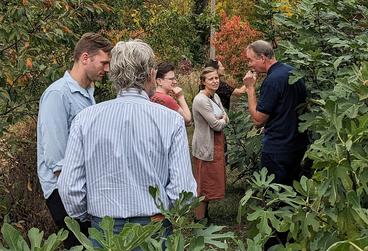
By Erin Niehoff, policy analyst, Center for Science, Technology, and Environmental Policy
How do values around water vary based on socioeconomic and geographic differences along the Mississippi River, from the headwaters in northern Minnesota to the Gulf of Mexico?
That's a question that Humphrey School Associate Professor Bonnie Keeler and a group of researchers—including me—are exploring as part of a grant from the U.S. Environmental Protection Agency (EPA) to assess the benefits of a cleaner Mississippi River and inform federal water policy.
At more than 2,300 miles long, the Mississippi is one of the great commercial waterways of the world thanks to decades of investments in infrastructure, including a network of locks, dams, levees, dikes, and diversions. The river provides opportunities for fishing, recreation, and commerce, along with drinking water for more than 20 million people.
But the river and its neighboring communities also face threats from agriculture, industry, and climate change—threats that disproportionately burden low-income populations and communities of color.
The research project includes visits to different cities along the Mississippi to meet with environmental justice organizers focused on the challenges facing their communities. The research team went to Minneapolis and Memphis in 2022 and St. Louis this year. Baton Rouge and New Orleans are planned for 2024.
The trip to St. Louis in October was my introduction to this project, and it was eye opening.
Radioactive landfill

On our first day in St. Louis we took a tour with Just Moms STL, a grassroots organization primarily composed of mothers and community members advocating for environmental justice and the remediation of nuclear waste issues in the West Lake Landfill.
The landfill, where an active fire burns underground, contains radioactive waste from the Manhattan Project, the World War II program that produced the first atomic bombs.
Just Moms STL has been instrumental in raising awareness, lobbying for cleanup efforts, and pushing for the protection of the community's health and environment.
Cancer and illness rates are higher for people who live along the waterways where the radioactive waste was moved and stored over the last 80 years. It has even contributed to the closure of an elementary school.
While on the tour, we came across federal government employees doing radioactivity sampling within a local park.
We got another visual perspective when we paddled on the Mississippi River. We passed by outfalls that discharge wastewater from different industries into the river; watched barge traffic; and passed by empty and unused buildings along the riverfront that held encampments of unhoused people, just steps away from the Gateway Arch National Park.
Community disinvestment

We hopped across the border into East St. Louis, Illinois, for another thought-provoking tour, this time with United Congregations of Metro-East, a coalition of congregations and faith-based organizations focusing on the east metropolitan area.
They typically work on various social justice initiatives, community organizing efforts, and advocacy campaigns aimed at systemic issues related to racial and economic justice, education, healthcare access, and affordable housing.
We heard about the health problems that face many in the community, caused by pollution from industries based along the Mississippi. We saw areas of disinvestment, closed schools, and communities that looked like they were coming apart at the seams.
Air quality
We ended with a tour led by Metropolitan Congregations United (MCU), a grassroots, multifaith, multiracial community organization. MCU aims to address social justice issues, particularly focusing on matters related to racial and economic equity. They work on a range of topics such as education reform, criminal justice, affordable housing, healthcare access, and economic development in the St. Louis metropolitan area.

MCU is implementing an air quality monitoring program to provide their communities with more information about the air they breathe.
One of their members, Jubilee Ministries, has worked to redirect its storm water within their property to a large urban garden, which they use to feed the community.
Every place is different and has its own nuanced histories that contribute to people’s concerns about the environment and their wellbeing. Getting different perspectives helps make environmental justice work more meaningful and impactful.
Research projects like this one from the Humphrey School—which look at the connections among community values, water, and the broader environment—help to inform policy decisions at all levels of government.
That is especially true at the federal level, where the Biden administration has established the Justice40 Initiative that aims to deliver at least 40 percent of the overall benefits from certain federal investments to disadvantaged communities.
This project is part of a long-term investment to build relationships with practitioners and community leaders that will lead to a lifetime of research and engagement on the social and ecological dynamics of the Mississippi River.

